Building a sales funnel is all about having a clear path from the first contact a potential customer has with your business right through to when they make a purchase or start using your services.
However, with the growth in omnichannel marketing, this journey through a sales funnel has become more fragmented and harder to plot than in the past. To combat this, organisations are now investing more into this process so that every step in the funnel clearly leads to the next and converts as many leads as possible into confirmed customers.
19 per cent of CSOs are focusing on optimising their lead generation.
There is also a lot of interest regarding how these processes can be optimised. In fact, research from Accenture found that 57 per cent of Chief Sales Officers (CSOs) are looking to increase sales effectiveness, while 19 per cent are focusing on optimising their lead generation.
To help you convert more leads into sales, we’ve assembled this three-step guide to optimising each stage of your sales process.
Plot your ideal sales pathway
This step sounds like the simplest, but it’s one that many businesses will overlook in their marketing and lead generation activities. This means looking at your current sales and working out which of the pathway customers are taking has the strongest conversion rate.
For example, it might be that you have an e-book that has formed a core part of your B2B marketing strategy and that is providing a lot of qualified leads. What’s more, the document could have been shared on LinkedIn which is serving to raise awareness of your brand.
On the other hand, if you are a B2C retailer, it could be that you’ve run a highly effective advertising or mailing campaign in the past that continues to direct people towards your business.
Regardless of what this ‘ideal’ sales funnel looks like, it’s important to define it so that you can direct your efforts towards increasing the number of individuals who take this journey. Having this clarity can also help to develop an omnichannel marketing approach that retains this clarity of purpose.
Expand the ‘mouth’ of your sales funnel
Once you have a high-level overview of what your ideal strategy looks like, the next step is to start at the beginning – the mouth of your sales funnel. This is where customers who have never interacted with your brand will get their first taste of what you have to offer and your business starts to generate leads.
There are many ways that you can expand this first step on the sales journey. Mailing lists, both B2B and B2C, are a great place to start, as they can provide directed access to customers who will have an interest in your brand. Many of these lists are highly detailed, giving you a strong chance to engage with your target audience.
Once you have picked this medium, the next step is to focus on converting leads back to that ideal sales pathway you established earlier.
Build a clear pathway from one step to the next
As mentioned above, fragmentation between each step in the funnel can easily mean that you lose leads, by making it harder for individuals to move from one group to the next. That’s why it’s important to carefully align these processes with the overall goal your organisation has.
Take the example above of a highly successful e-book or advertising campaign. You can then either embed these resources within an email marketing campaign or insert calls to action that direct people towards them. This allows you to combine an omnichannel marketing approach with a very specific sales pathway that you can direct prospects towards.
Optimising this process so that your business has a steady stream of new leads can be tricky to develop. But, with a strong strategy in place, you can begin to create a stronger range of leads that meet your sales goals.






